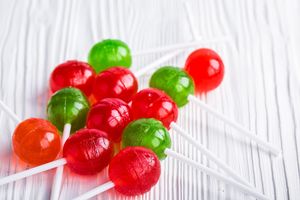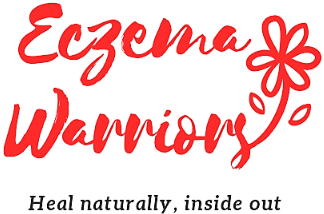This article is part of a series that discusses the allergies to food additives, with particular focus on the harmful effects of flavour enhancers like monosodium glutamate (MSG), aspartame, and high fructose corn syrup (HFCS). The other articles can be found here:
- Allergies to Food Additives – Preservatives
- Allergies to Food Additives – Food Colouring
- Allergies to Food Additives – Texture Enhancers
What are Flavour Enhancers

A flavour enhancer, as the name suggests, enhances the flavouring of the food that it is added to. It brings out a strong and pleasant, sometimes addictive taste in foods, so that we keep going back for more.
This means that any bland or poor quality food can be made the most exciting by these additives. Most flavour enhancers have no nutritional value, in fact some of the most problematic ones even cause harmful effects and wreak havoc in our bodies.
Many people can take flavour enhancers without any serious side effects. However, the more sensitive ones can experience anything from a whole range of negative symptoms: dehydration, migraine, depression, insomnia, fatigue, brain fog, behavioural disorders, asthma, heart palpitations, nausea, numbness, dizziness, and skin irritation.
Even for seemingly perfectly healthy people who do not react to flavour enhancers at all, regularly ingesting them certainly cannot be a good thing. If we do not take care of what we eat, sooner or later health issues are bound to creep up on us.
For the sake of my two eczema warriors, we are staying as far away as possible from any food additives. They have enough allergies and reactions to deal with on a daily basis, they do not need further toxic load.
Here we will discuss the top 3 most common and harmful flavour enhancers, along with some attention to ‘natural’ flavour enhancers.
Monosodium glutamate (MSG)
MSG is the sodium salt of glutamic acid. It does occur naturally in foods like tomatoes, cheese, and mushrooms. That is what contributes to the strong flavours of these foods. Scientists found a way to extract these glutamic acids, and stabilise them with salts.
So this synthetic flavour enhancer can be added to any food to add a uniquely and robustly savoury taste to it. There is in fact a name given to this flavour – umami, often called the fifth taste (the other four are salty, sweet, sour, and bitter).
Its code is E621. There are enhancers that work hand in hand with MSG, including E627, E631, and E635. Which means that if these are in the food, MSG should be in there too, either explicitly labeled or hidden (legally, unfortunately) in other additives.
MSG is an excitatory neurotransmitter, as it excites nerve cells in order to relay its signal. It also overexcites the brain, until the mature brain cells die, hence it is an excitotoxin. This research suggests that MSG is toxic to our brain neurons. That is why children with autism or sensory disorders may react strongly to MSG, as it affects our brain.
With the great taste that is transmitted to our brain, we can’t help but going back to the same unhealthy and nutrient-deficient foods that manufacturers would want us to consume. We are addicted, and it makes us crave for even more of this harmful substance. That is how we cannot stop stuffing ourselves with potato chips, crackers, and other junk food.
This is how manufacturers hide MSG in their products: through labels such as ‘yeast extract’, ‘hydrolyzed vegetable protein’, ‘hydrolyzed protein’, ‘plant protein extract’, ‘spice extract’, ‘malt extract’, ‘broth’, ‘seasoning’, ‘flavouring’, and even ‘natural flavouring’. Any of these additives can (and most likely do) contain MSG, without the manufacturer having to name it explicitly on the ingredients list.
Which means a product can be labeled ‘No added MSG’ because that is what consumers like to see, and yet it exists through the ‘extracts’ and other dubious additives. This is the act of sneakiness made perfect.
MSG is found in many processed and packaged food, fast food, and even cooked food in restaurants, eateries, and hawkers. It is literally everywhere. Except when you have home cooked food, only then can you be in control of what goes into your meals.
Aspartame
Aspartame is a chemical used as a sugar substitute in many ‘diet’, ‘low sugar’, and ‘no added sugar’ products. It is marketed under the brand names NutraSweet and Equal. It is in fact 200 times sweeter than your regular sugar. So if you go for ‘diet’ foods that contain aspartame, you are actually deceiving yourself, and putting yourself at a greater health risk.
The ingredients of aspartame are aspartic acid and phenylalanine. When we consume aspartame, part of it breaks down into methanol. Free methanol is also created when aspartame is heated, like when we consume hot beverages or cooked food. Free methanol is problematic because it further breaks down to form formaldehyde, which is a well-known carcinogen and neurotoxin.
There are numerous side effects associated with aspartame consumption, as research has shown. Well-known ones include headaches, emotional disorders, depression, epilepsies and seizures, birth defects, weight gain, allergic reactions, heart diseases, and cancer risks.
However, various health-related agencies around the world, including the U.S. Food and Drug Administration (FDA), have found the amount of aspartame consumed by people to be within the safe limit. On the other hand, there are also numerous independent researches that have suggested health problems with this sweetener.
Aspartame can be found in (though not limited to) these food items, so keep your eyes peeled: soft drinks, drink mixes, gelatin desserts, frozen desserts, jam and fruit spreads, yogurt, breakfast cereal, candy, chewing gum, condiments, and packaged (tabletop) sweeteners.
If you really must satisfy your sweet tooth, go for natural stuff like raw honey, maple syrup, agave nectar, stevia leaves, and fresh fruit juice (freshly juiced or blended up in your own home, with your own hands).
High fructose corn syrup
High fructose corn syrup (HFCS) is another form of artificial sugar, made from corn syrup, with an added enzyme to convert some of the glucose into fructose. It is about as sweet as regular sugar, but much cheaper to produce due to U.S. government subsidies on corn, and taxes on imports of sugar.

The problem with fructose is that our body is not designed to break it down effectively, unlike glucose. High amounts of fructose consequently leads to it being stored as fats in the liver. This can lead to serious health issues like liver disease, and type 2 diabetes. Long term consumption can result in weight gain, obesity, and heart disease as well.
On top of these, HFCS and sugar are known to drive inflammation, which obviously is never good. Hence, the links to heart disease and cancer. They also feed tumour cells, encouraging their growth.
HFCS is found in many drinks, including powdered beverages. They are also common in candy, salad dressing, canned fruit, breakfast cereal, sauces, condiments, jam, and ice cream.
So ditch the HFCS and go for controlled amounts of your favourite natural sweet food, no matter what they are still high in calories. My favourite natural sweetener is raw honey, I use it in almost everything that needs sweetening, from tea and ice cream to sauces and spreads.
‘Natural’ Flavour Enhancers
We have just covered the top 3 artificial flavour enhancers that you should avoid at all cost. How about those labeled ‘natural’? They must be fine, right? Well… not totally. Anything commercially produced has been processed, modified from their original states, with some components isolated, others extracted, additives included to stabilise them, or preserve them from spoiling.
Natural flavouring are extracted from plant or animal sources. That is the only thing ‘natural’ about them. There can be 101 chemicals added to these extracts subsequently, to keep them in solution, or keep the powdered form uniformly mixed, etc.
Moreover, there is no official definition for the term ‘natural’. Anyone can use it, even on genetically modified products. So whether artificial flavours or natural flavours, they can be very similar in terms of their chemical composition. Extracted to the most basic forms, everything becomes a chemical.
So natural flavouring labeled on products really don’t mean much, do not give yourself a false sense of security by choosing these food items. If they are really natural, you should be picking them off the ground or plucking them off trees and bushes, not having gone through a production line with additives upon additives and stuffed right under your nose proclaiming it as ‘natural’!
Whole Food, Unprocessed
If you really must have some packaged food out of convenience, or for the road, on the go, here are our recommended snacks, additive-free and gluten free.
But the best that you can give yourself and your family is simpler than anything off the shelf. What nature intended for us, that is the best. Fresh produce are already bursting with colours and flavours, on top of that, they are loaded with all the enzymes, nutrients, and minerals that are in the state which our bodies can readily assimilate.
Raw honey for sweet, dead sea salt for salty, lemon for sour and bitter gourd for bitter. Mushrooms, tomatoes and cheese for umami the fifth taste. And not forgetting chillis and peppers for spiciness, of course, if you need the thrill.
Nature brings us the best, flavourful, healing, and invigorating. Who needs aspartame and MSG to bring us to our downfall?

This is an Exceptionally well written article that had me engaged start to finish. I thoroughly relate to experiencing head aches with aspartame and mild nausea too if i decided binging on too many chewing gum strips. It’s one of the warnings on the back of chewing gums in our market place today.
As for high Corn syrup i remember watching a documentary Forks over Knives and also Fat, Dead and Nearly sick. It is not easily broken down and one of many culprits in obesity both in adults and more commonly in children now a days.
The first one, MSG well that really was enlightening with such substantial research that I’m learning now it is a naturally occurring salt complexed with Glutamic acid, present in highly flavorful vegetables, my favorite being Tomato and next mushroom.
You are so correct about Nature pre packaging the best for us already . We are a culture of instant gratification and hastily overlook our bountiful gifts.
I loved reading this article !!
Hi Shweta,
Thank you for your kind words. Yes I have watched Forks over Knives too, as well as Fat, Sick and Nearly Dead.
I’m also reading the book ‘How Not to Die’. These are full of wisdom and reminders to live simply, and eat what nature has intended for us.
Hi Joo, this is very insightful, thanks. The whole family is supposed to stay off MSG but I didn’t know it could legally be hidden under all those terms! I have learned over the years that, because everybody is different, *every body* is different too. So for us, cane sugar is the bad guy, while fructose is the good guy! It is what allows my kids to have any biscuits or cakes, home-made as we can’t buy anything processed… All the best, Isabel
Hi Isabel,
Wow it’s wonderful that your whole family is staying off MSG! I guess you’re doing lots of home cooked meals? Practically all outside food has MSG.
Yeah it’s quite unique that your kids can take fructose but not cane sugar. Anyway home-made is always the best, as you know what goes into the biscuits and cakes, and they’re full of a mother’s love.
Hi Jo,
This is a great article with lots of interesting information. I honestly believe that most of the populational diseases and allergies we have today are caused because of the chemically processed food with all the E’s stabilizers and enhancers. But the question is how you can avoid that apart from growing it yourself?
Thanks for the very informative article.
Eugen
Hi Eugen
Yeah you’re so right. That’s why the best thing to do is avoid all processed foods, as much as possible. Go for whole foods, natural and straight from the earth, bushes or trees.
Great article what’s your opinion on antacids given to to kids and then causing of food allergies when they get older?
I read a recent article linking antacid use in infants to food allergies late in life.
Hi Brandon,
Yes I do believe strongly in this possibility that use of antacids in infants can lead to food allergies later in life. There are so many things yet to be uncovered by science, especially when it comes to the workings of our bodies.
So as a general philosophy, my personal opinion is not to meddle with body functions using drugs and synthetic materials. Instead, support your body with what it needs (nutrients, minerals, vitamins) to boost it into healing itself.